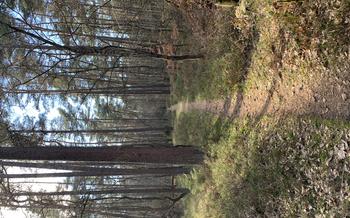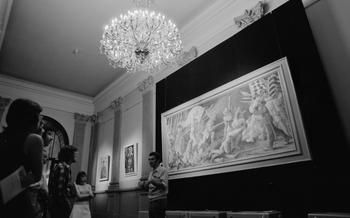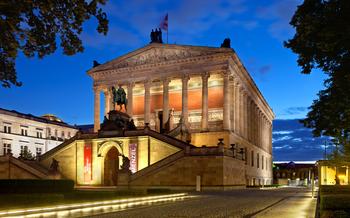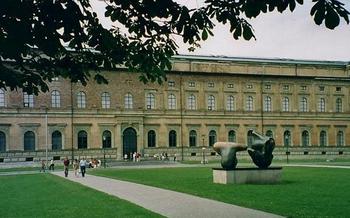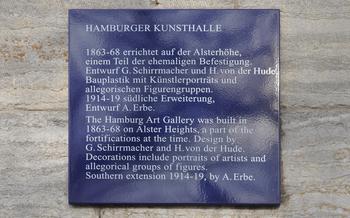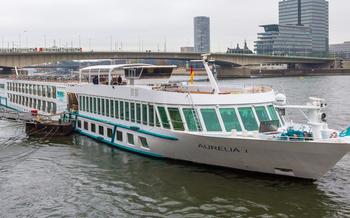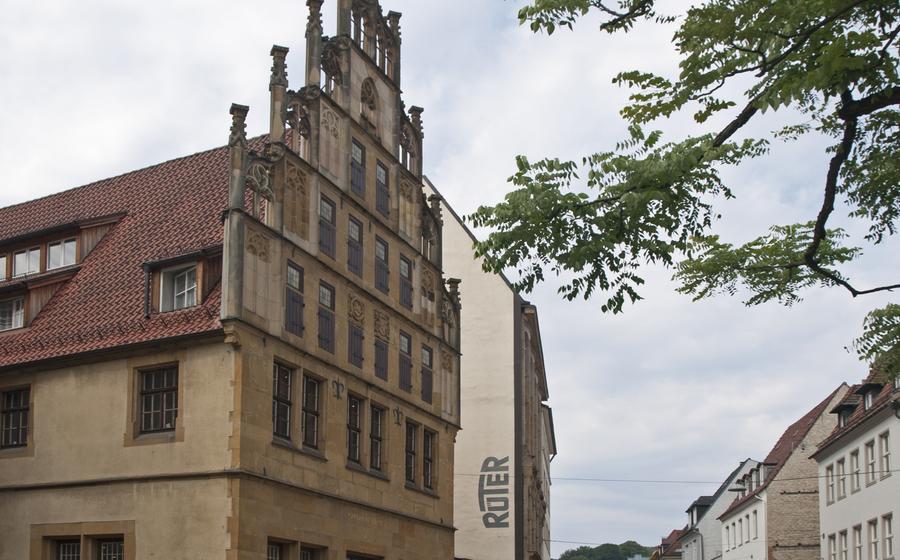
Externsteine (in nearby Horn Bad Meinberg)
- The Externsteine: A Unique Rock Formation
- Exploring the Externsteine Area
- Hiking Trails: A Wanderer's Paradise
- Guided Tours: Unveiling the Past
- Climbing Opportunities: A Climber's Nirvana
- Picnic Spots: A Culinary Symphony
- Unraveling the Mysteries of the Externsteine
- Visiting the Externsteine Visitor Center
- Planning Your Visit to the Externsteine
- Tips for a Memorable Experience
- Discovering the Legends of the Externsteine
- The Externsteine in Popular Culture
- The Externsteine's Geological Significance
- The Externsteine as a Climbing Destination
- The Externsteine in Modern Times
- The Externsteine and New Age Beliefs
- The Externsteine in Art and Literature
- Insider Tip: Off-the-Beaten-Path Experiences
The Externsteine: A Unique Rock Formation
The Externsteine are a series of impressive sandstone cliffs located in the Teutoburg Forest, near the town of Horn-Bad Meinberg in Germany. These natural wonders were formed over millions of years by the erosion of the surrounding sandstone, creating a unique and awe-inspiring landscape.
The Externsteine have been a site of great historical and cultural significance since ancient times. They were considered a sacred place by the ancient Germanic tribes, who believed that the rocks possessed magical powers. In the Middle Ages, the Externsteine became a popular destination for pilgrims and travelers, who sought to experience the spiritual energy of the site.
The Externsteine are also featured prominently in German mythology and folklore. They are said to be the home of the dwarves, who are believed to have carved the mysterious symbols and inscriptions found on the rock faces. The Externsteine are also mentioned in the Nibelungenlied, one of the most famous epic poems in German literature.
Today, the Externsteine are a popular tourist destination, attracting visitors from all over the world. The site is easily accessible by car or public transportation, and there is a visitor center that provides information about the history, geology, and cultural significance of the Externsteine.
Exploring the Externsteine Area
Beyond the Externsteine themselves, the surrounding area offers a wealth of opportunities for exploration and adventure. Whether you're an avid hiker, a history enthusiast, a nature lover, or simply seeking a peaceful retreat, the Externsteine region has something for everyone.
Hiking Trails: A Wanderer's Paradise
The Externsteine are nestled amidst the picturesque Teutoburg Forest, a sprawling expanse of ancient woodlands and rolling hills. A network of well-marked hiking trails crisscrosses the forest, inviting you to immerse yourself in the tranquility and beauty of nature. From leisurely strolls to challenging climbs, there's a trail to suit every fitness level and preference.
Guided Tours: Unveiling the Past
To delve deeper into the history and geology of the Externsteine, guided tours are available throughout the year. Knowledgeable guides will lead you through the forest, sharing fascinating insights into the formation of the rock formations, the archaeological discoveries made in the area, and the legends and myths that surround the site.
Climbing Opportunities: A Climber's Nirvana
For those with a thirst for adventure, the Externsteine offer an exhilarating challenge. Experienced climbers can tackle the sheer rock faces, scaling the heights to reach breathtaking viewpoints and experience the thrill of conquering nature's obstacles. Safety measures are in place, and climbing equipment can be rented on-site, making it accessible to climbers of all levels.
Picnic Spots: A Culinary Symphony
After a morning of exploration, pack a delicious picnic lunch and head to one of the designated picnic spots in the Externsteine area. Surrounded by the tranquil beauty of the forest, you can savor local delicacies and homemade treats while enjoying the fresh air and stunning views.
Unraveling the Mysteries of the Externsteine
The Externsteine is shrouded in an aura of mystery, with enigmatic carvings and inscriptions adorning its rock faces. These ancient symbols, dating back to the Saxon and Carolingian periods, have captivated the imaginations of historians and archaeologists for centuries. Some of the most notable carvings include a cross, a sun wheel, and a sword, along with various runic inscriptions.
Archaeological excavations conducted at the site have unearthed a wealth of artifacts, including pottery shards, tools, and weapons. These findings suggest that the Externsteine was once a sacred site, possibly used for religious rituals and ceremonies. However, the exact purpose and significance of these ancient markings remain a subject of debate among scholars.
Throughout history, the Externsteine has been the subject of numerous legends and folklore. One popular tale tells of a giant who was turned to stone by a wizard, while another speaks of a hidden treasure buried beneath the rocks. These stories, passed down through generations, have added to the mystique and allure of this enigmatic site.
Visiting the Externsteine Visitor Center
The Externsteine Visitor Center is an essential stop for anyone seeking a deeper understanding of the Externsteine's history, geology, and cultural significance. Located just a short walk from the rock formation, the center offers a range of interactive exhibits, guided tours, souvenirs, and publications.
Inside the visitor center, visitors can embark on an immersive journey through time, exploring the Externsteine's geological origins, archaeological discoveries, and historical theories. Interactive displays and multimedia presentations bring the Externsteine's story to life, providing insights into the ancient rituals and legends associated with this unique site.
Guided tours led by knowledgeable experts offer an in-depth exploration of the Externsteine's significance. These tours delve into the fascinating debates surrounding the origins and purpose of the rock formation, shedding light on the archaeological findings and historical theories that have shaped our understanding of this enigmatic site.
The visitor center also houses a well-stocked shop where visitors can purchase a range of souvenirs, books, postcards, and other items related to the Externsteine. These mementos serve as a lasting reminder of the unique experience of visiting this ancient and awe-inspiring place.
For visitors with disabilities, the Externsteine Visitor Center is fully accessible, ensuring that everyone has the opportunity to explore and learn about this remarkable site. Ramps, elevators, and accessible restrooms make it possible for individuals of all abilities to enjoy the exhibits, guided tours, and other facilities.
Planning Your Visit to the Externsteine
Before embarking on your journey to the Externsteine, careful planning is essential to ensure a smooth and enjoyable experience. The site's opening hours and admission fees vary depending on the season and public holidays. To avoid disappointment, it's recommended to check the official website or contact the visitor center for up-to-date information.
Designated parking areas are available near the Externsteine, ensuring convenient access for visitors arriving by car. However, if you prefer to travel by public transportation, there are bus and train connections from nearby towns and cities. Public transportation offers a scenic and hassle-free way to reach the Externsteine, allowing you to sit back, relax, and enjoy the beautiful surroundings.
Tips for a Memorable Experience
To ensure a truly memorable visit to the Externsteine, it's important to come prepared and respectful of the natural environment. Dress appropriately for the weather and the terrain, opting for comfortable shoes for hiking and layers of clothing to adapt to changing conditions. Don't forget to bring essentials like water, snacks, sunscreen, and a camera to capture the stunning scenery.
Mindful exploration is key to preserving the natural beauty of the area. Stick to designated trails to minimize your impact on the environment and avoid disturbing wildlife. Extend your stay in the region to fully immerse yourself in its rich history and culture, exploring nearby attractions such as the Hermannsdenkmal, a towering monument dedicated to the ancient Germanic leader Arminius, and the charming town of Detmold, with its well-preserved Renaissance architecture.
By following these simple tips, you'll enhance your experience at the Externsteine, creating lasting memories while respecting and protecting this unique natural and cultural treasure.
Discovering the Legends of the Externsteine
The Externsteine has captivated the human imagination for centuries, inspiring a rich tapestry of legends and folklore. In ancient Germanic mythology, the rocks were associated with the gods Odin, Thor, and Loki, and were believed to be a sacred site for religious rituals and ceremonies.
The Externsteine also plays a prominent role in the epic poem the Nibelungenlied, where it is depicted as the hiding place of the legendary treasure of the Nibelungs. According to the poem, the hero Siegfried slays the dragon Fafnir and takes possession of the treasure, which he buries in a cave beneath the Externsteine.
Local folklore is replete with tales of witches, giants, and hidden treasures associated with the Externsteine. One legend tells of a giant named Bodo who was turned to stone by a wizard, and whose petrified remains can still be seen among the rocks. Another story speaks of a hidden treasure buried beneath the Externsteine, guarded by a fierce dragon that only appears on certain nights of the year.
In modern times, the Externsteine has continued to inspire artistic and literary works. Poets, painters, and musicians have drawn upon the site's rich history and mythology for inspiration, creating new interpretations and perspectives on this enigmatic place.
The Externsteine in Popular Culture
The Externsteine has captured the imagination of artists, writers, and filmmakers, becoming a popular subject in various forms of popular culture. In the realm of film and television, the Externsteine has served as a backdrop for numerous productions, including the German TV series "Die Nibelungen" (2004) and the historical drama "Barbarossa" (2009). Its distinctive appearance has also made it a popular location for fantasy and adventure films, such as "The NeverEnding Story" (1984) and "The Seventh Sword" (2010).
In the world of literature and art, the Externsteine has inspired numerous works of fiction, poetry, and visual art. German Romantic writer Friedrich de la Motte Fouqué featured the Externsteine in his novel "Der Zauberring" (1813), weaving it into a tale of chivalry and magic. The site has also been immortalized in paintings by Caspar David Friedrich and in sculptures by Joseph Beuys, who created a monumental bronze work titled "Externsteine" in 198
The Externsteine's unique atmosphere and historical significance have also made it a source of inspiration for musicians and theater artists. German composer Richard Wagner was fascinated by the Externsteine and incorporated motifs from the site into his opera "Parsifal" (1882). In recent years, the Externsteine has been featured in video games, such as the action-adventure game "The Witcher 3: Wild Hunt" (2015), and in immersive virtual reality experiences that allow users to explore the site in a virtual environment.
The Externsteine's presence in popular culture highlights its enduring appeal and the diverse interpretations it has inspired over the centuries. Whether it appears in film, literature, art, or gaming, the Externsteine continues to captivate audiences with its mystique and beauty, inviting them to explore its rich history and cultural significance.
The Externsteine's Geological Significance
The Externsteine are not just cultural and historical wonders; they also hold immense geological significance. These colossal sandstone cliffs were formed over millions of years through a complex interplay of geological processes. The rocks that make up the Externsteine were deposited during the Cretaceous period, approximately 100 million years ago, when the region was covered by a shallow sea. Over time, layers of sand, mud, and organic material accumulated, forming thick sedimentary deposits.
The subsequent retreat of the sea and the uplift of the land exposed these sediments to erosion, which gradually carved out the distinctive shapes of the Externsteine. The differential erosion of softer and harder rock layers, combined with weathering processes such as wind, rain, and frost, further refined the formations, creating the dramatic pinnacles and crevices that we see today.
The rock composition of the Externsteine is primarily sandstone, a sedimentary rock composed of cemented sand grains. The sandstone at the Externsteine is particularly rich in quartz, which gives it its characteristic hardness and durability. In addition to quartz, the sandstone also contains other minerals, such as feldspar and mica, as well as trace amounts of fossils, including shells, bones, and plant remains.
The Externsteine are an important geological site, providing valuable insights into the geological history of the region. They are also a reminder of the power of natural forces, which have shaped and continue to shape our planet's landscapes.
The Externsteine as a Climbing Destination
Challenging Routes for Experienced Climbers: The Externsteine is a popular destination for climbers of all skill levels, offering a variety of routes to suit different abilities. From beginner-friendly climbs to challenging routes that will test even the most experienced climbers, there is something for everyone at the Externsteine. The rock formations offer a unique climbing experience due to their unusual shapes and textures, requiring climbers to use a combination of strength, technique, and agility to navigate the challenging terrain.
Safety Measures for a Thrilling Experience: To ensure a safe and enjoyable climbing experience, it is important to adhere to the established safety guidelines and precautions. Climbers should always use proper climbing equipment, including a harness, helmet, and appropriate footwear. Checking the weather conditions before heading out is also essential, as rain or strong winds can make climbing dangerous. Climbers are encouraged to climb in groups and have a spotter to ensure their safety.
Equipment Rental for Convenience: For those who do not have their own climbing gear, there are several rental shops in the area where climbers can rent the necessary equipment. These shops offer a range of equipment options to suit different needs and skill levels, ensuring that climbers have access to the gear they need to enjoy their climbing experience at the Externsteine.
A Vibrant Climbing Community: The Externsteine has a thriving climbing community, with climbers from all over the region coming together to share their passion for the sport. The community is welcoming and supportive, providing a sense of camaraderie and encouragement to climbers of all levels. Climbers can often be seen sharing tips, techniques, and beta, creating a collaborative environment where everyone can learn and improve their climbing skills.
The Externsteine in Modern Times
The Externsteine has undergone significant transformation in modern times, marked by efforts to preserve its historical and natural significance. Conservation projects have been implemented to protect the rock formations from erosion and deterioration. Archaeological research continues to shed light on the site's rich past, with ongoing excavations and studies contributing to a deeper understanding of its origins and purpose.
Balancing conservation, research, and public access remains a key challenge. The Externsteine's popularity as a tourist destination requires careful management to ensure that its integrity is preserved while allowing visitors to experience its wonders. Sustainable tourism practices and responsible visitation are essential to safeguarding the site for future generations.
The Externsteine stands as a testament to the enduring power of nature and human history. Through ongoing conservation efforts, research initiatives, and responsible public access, this unique rock formation will continue to inspire and captivate visitors for years to come, ensuring its legacy as a symbol of Germany's rich cultural heritage.
The Externsteine and New Age Beliefs
In recent decades, the Externsteine have become a popular destination for individuals seeking spiritual experiences and connections to ancient mysteries. The site's unique rock formations and enigmatic symbols have attracted followers of New Age beliefs, who believe that the Externsteine possess special energy and significance. As a result, the site has become a place of pilgrimage and rituals, with individuals engaging in meditation, ceremonies, and spiritual gatherings.
However, these activities have sparked controversy among some visitors and local residents, who argue that they are inappropriate and disrespectful to the historical and natural significance of the Externsteine. Balancing the need for spiritual exploration with the preservation and conservation of the site remains a delicate task, requiring careful consideration and dialogue among all stakeholders involved.
The Externsteine in Art and Literature
The Externsteine have been a source of inspiration for artists and writers for centuries. They have been depicted in paintings, sculptures, and photographs, and have been referenced in works of fiction, poetry, and drama.
One of the most famous artistic representations of the Externsteine is Caspar David Friedrich's painting "The Wanderer above the Sea of Fog" (1818). In this painting, the Externsteine are depicted in the background, as a symbol of the sublime and awe-inspiring power of nature.
The Externsteine have also been featured in works of literature, such as the novel "Hermann and Dorothea" (1798) by Johann Wolfgang von Goethe. In this novel, the Externsteine are described as a place of mystery and wonder, and are associated with the ancient Germanic gods.
In modern times, the Externsteine continue to inspire artists and writers. Contemporary artists have created sculptures, installations, and performance pieces that engage with the Externsteine's history, mythology, and natural beauty. Writers have explored the Externsteine in novels, short stories, and poems, often using them as a setting for stories about time travel, ancient mysteries, and the search for meaning in life.
The Externsteine's enduring appeal to artists and writers is due to their unique combination of natural beauty, historical significance, and mythological associations. They are a symbol of Germany's rich cultural heritage, and a reminder of the power of nature to inspire and awe.
Insider Tip: Off-the-Beaten-Path Experiences
Unleash your sense of adventure and explore the hidden gems of the Externsteine region beyond the main tourist trails. Discover lesser-known viewpoints that offer breathtaking panoramas of the rock formations, immersing yourself in the tranquility of nature. Embark on a guided night tour and uncover the mystical charm of the Externsteine under the moonlight, revealing a different perspective of these ancient wonders.
Venture off the beaten path and explore secret hiking trails that lead you to secluded spots and hidden corners of the surrounding forest. Embrace the serenity of nature as you wander through tranquil paths, stumbling upon unexpected vistas and intimate encounters with the local flora and fauna.
Indulge in the culinary delights of the region by savoring regional specialties at nearby restaurants and cafes. Sample traditional dishes that showcase the flavors of Westphalia, tantalizing your taste buds with authentic German cuisine. Immerse yourself in the local culture and engage with the friendly locals to uncover hidden culinary treasures that will leave a lasting impression.
